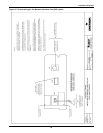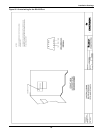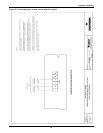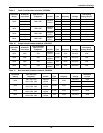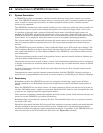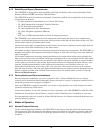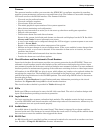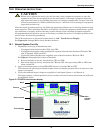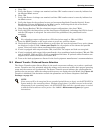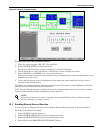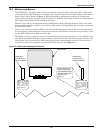
Theory of Operation
72
9.0 THEORY OF OPERATION
9.1 General Description
The STS2/PDU contains all the equipment necessary to prevent an interruption in power flow to the
AC load, should your primary source fail.
9.1.1 Static Transfer Switch 2 Power Distribution Unit
The STS2/PDU is a combination automatic static transfer switch and power distribution unit. The
STS2/PDU shall include two isolation transformers connected to a solid-state, three-pole, dual-posi-
tion static transfer switch designed to automatically and manually switch between two synchronized
three-phase AC power sources without an interruption of power to the load longer than 4 milliseconds
(1/4 cycle). Input, output, bypass circuit breakers and a distribution section shall be included to form
an integrated system in a single freestanding enclosure.
The preferred source is the input source that normally carries the load when both sources are avail-
able. The preferred source is selectable by the user from the LCD panel or an optional Remote Source
Selection. The unselected source is referred to as the alternate source and carries the load if the pre-
ferred source should fail or if a manual transfer is initiated.
The unit uses Silicon Controlled Rectifiers (SCRs) connected in paralleled, opposing pairs to function
as an AC switch configuration. Three pairs of SCRs connect the AC load to the selected preferred
input source as long as the preferred source is available. A second set of SCRs stands ready to trans-
fer the AC load to the alternate input source should the preferred source fail. The switching action is
a very fast, break-before-make with less than a 1/4 cycle break in the AC waveform.
During static switch transfers and retransfers, the conduction state of the SCRs is carefully moni-
tored and controlled to prevent a current path from one source to the other. This technique prevents a
faulted source from feeding into the other good source.
9.1.2 Source Transfer
The STS2/PDU allows manually initiated transfers between the two sources, providing the alternate
source is within acceptable voltage limits and phase tolerances with the preferred source. You begin a
manual transfer by selecting the inactive source as the preferred source. On a manual transfer, the
STS2/PDU transfers between the two sources with less than one (1) millisecond interruption of power
to the load. The transfer can only be completed when both sources are available and synchronized
within the user-adjustable phase synchronization window. For sources where the two frequencies are
not exactly in phase, manually-initiated transfers are delayed by the STS2/PDU until the two sources
are within the defined phase synchronization window.
Source selection can also be done remotely using the Remote Source Selection option, if installed.
9.1.3 Automatic Transfer/Retransfer
If the preferred source is out of voltage and/or frequency limits, the load is automatically transferred
to the alternate source. The default transfer voltage limits comply with the limits of the
IEEE Std. 446-1995 computer voltage tolerance envelope.
If the unit is so configured, the load is retransferred automatically to the preferred source after the
preferred source returns to within the acceptable voltage and frequency limits for at least the defined
retransfer time delay and is in phase with the alternate source. You can enable and disable automatic
retransfer to the preferred source through a user configuration setting.
Automatic Retransfer Inhibited
If the system makes five transfers from the preferred source to the alternate source in a five minute
period, automatic retransfers back to the preferred source is disabled.
To clear this alarm condition, you must assign the alternate source as the preferred source. Also, the
UV detection thresholds may need adjustment. See Source Setpoints on page 101 for instructions
on setting the UV detection.
This alarm also is cleared if the unit transfers to the preferred source due to an alternate source AC
volt failure (i.e., an emergency transfer.)



